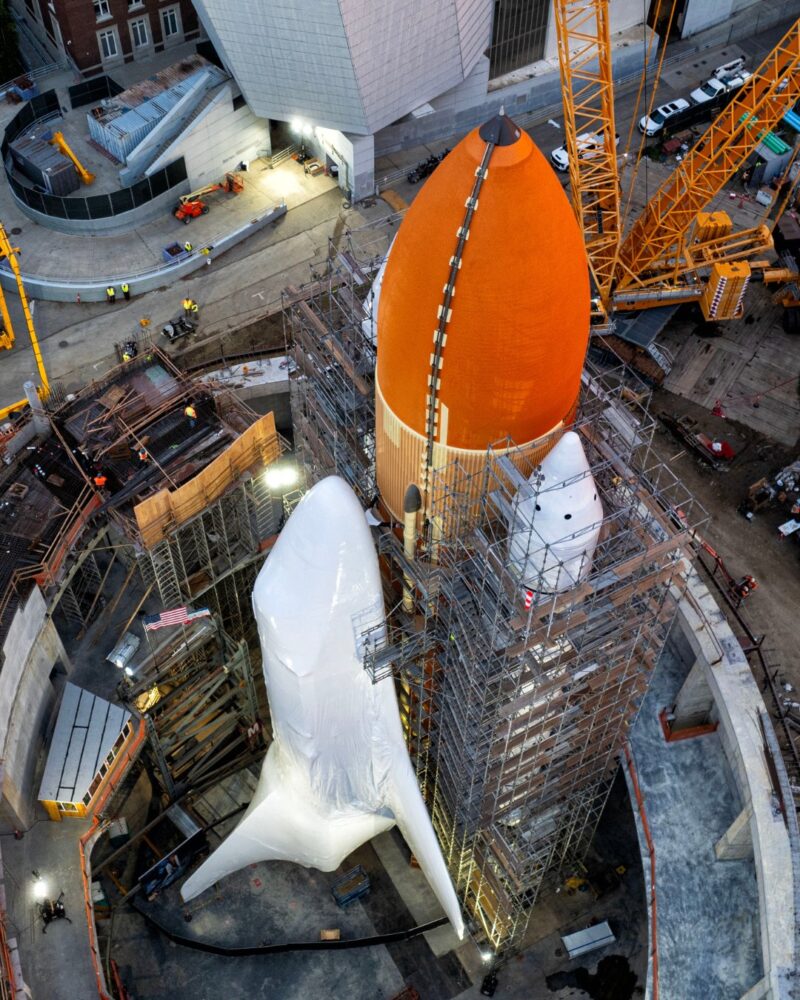
Over 12 years have passed since the Space Shuttle program entered the history books with the bittersweet landing of STS-135. Despite this, the elegant winged orbiters still hold a special place in American culture. As the most complex machines ever built, they stand as symbols of human ingenuity and the triumphs and tragedies which are intrinsic to exploration. The public was reminded of the Shuttle’s majesty last Monday when the California Science Center took a major step towards completing a one-of-a-kind display. The orbiter Endeavour was lifted into the air and mated to a flightworthy External Tank and Solid Rocket Boosters. The exhibit will be the only authentic Space Shuttle stack in existence. The Science Center still has several major milestones ahead of it – most importantly, more fundraising – but Endeavour’s lift was a major step towards the completion of the exhibition.
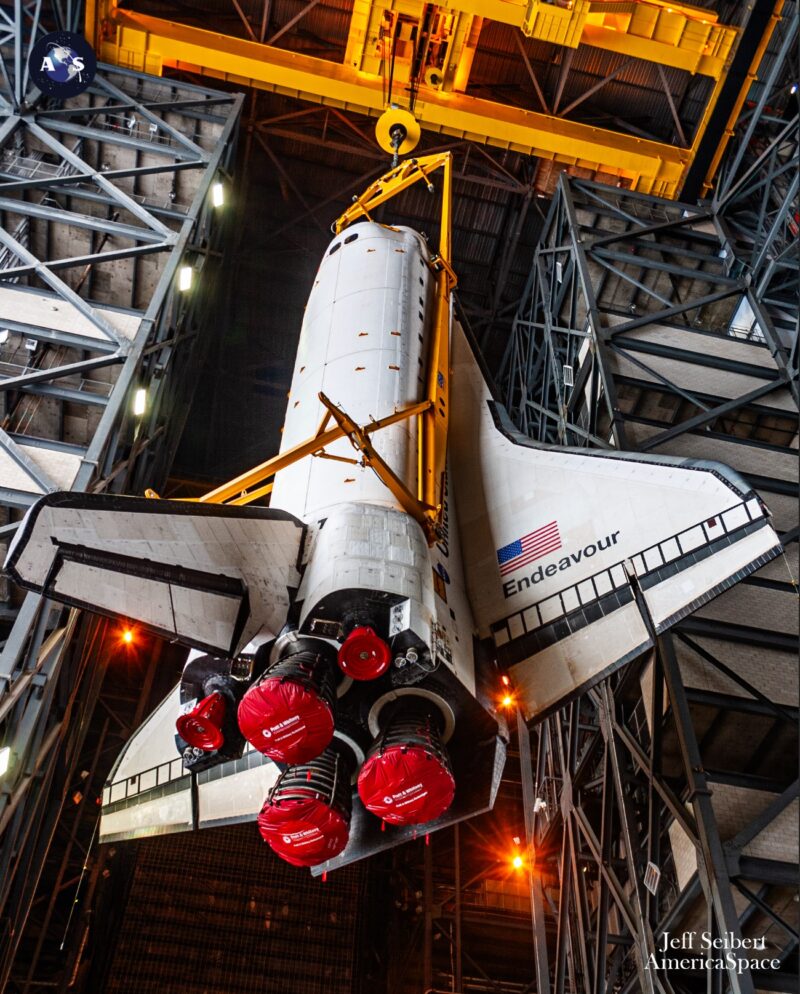
The journey towards this moment began nearly 13 years ago. On April 12th, 2011 (the 30th anniversary of STS-1), NASA announced the names of the museums which would receive its three surviving orbiters. The Smithsonian’s National Air and Space Museum and the Kennedy Space Center’s Visitor Complex were unsurprising choices. However, many external observers were surprised when Endeavour was gifted to the comparatively unnoticed California Science Center. The decision earned the chagrin of the Johnson Space Center in Houston, which had expected to receive a flown Shuttle.
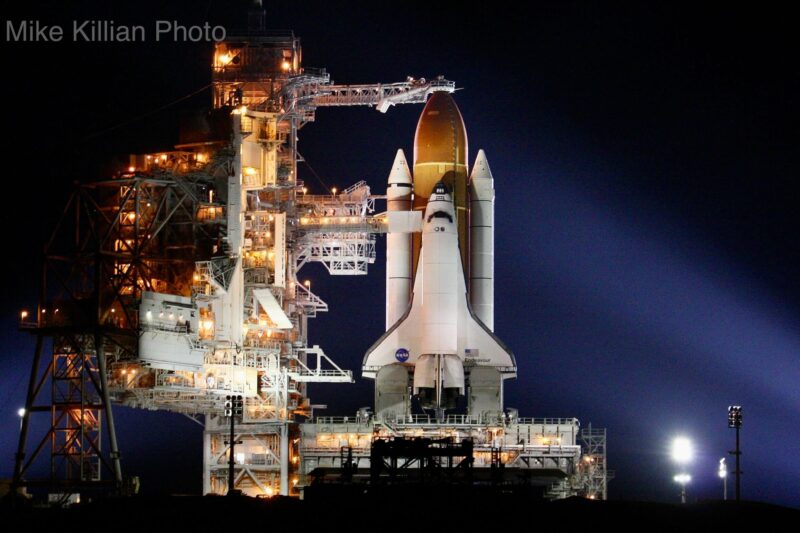
The California Science Center received Endeavour as a result of what NASA deemed an exceptional exhibition plan. NASA’s Office of the Inspector General audited 13 proposals from museums which requested a Shuttle orbiter [1]. The Science Center’s proposal received the agency’s highest rating. In broad strokes, the proposal closely resembled the display which the museum is currently building. The Science Center intended to create a unique experience for visitors by assembling a complete, launch-ready Shuttle stack. It would include an orbiter, an External Tank (ET), and two Solid Rocket Boosters (SRBs). The proposed exhibit would allow members of the public to grasp the scale of a Shuttle on its launch pad.
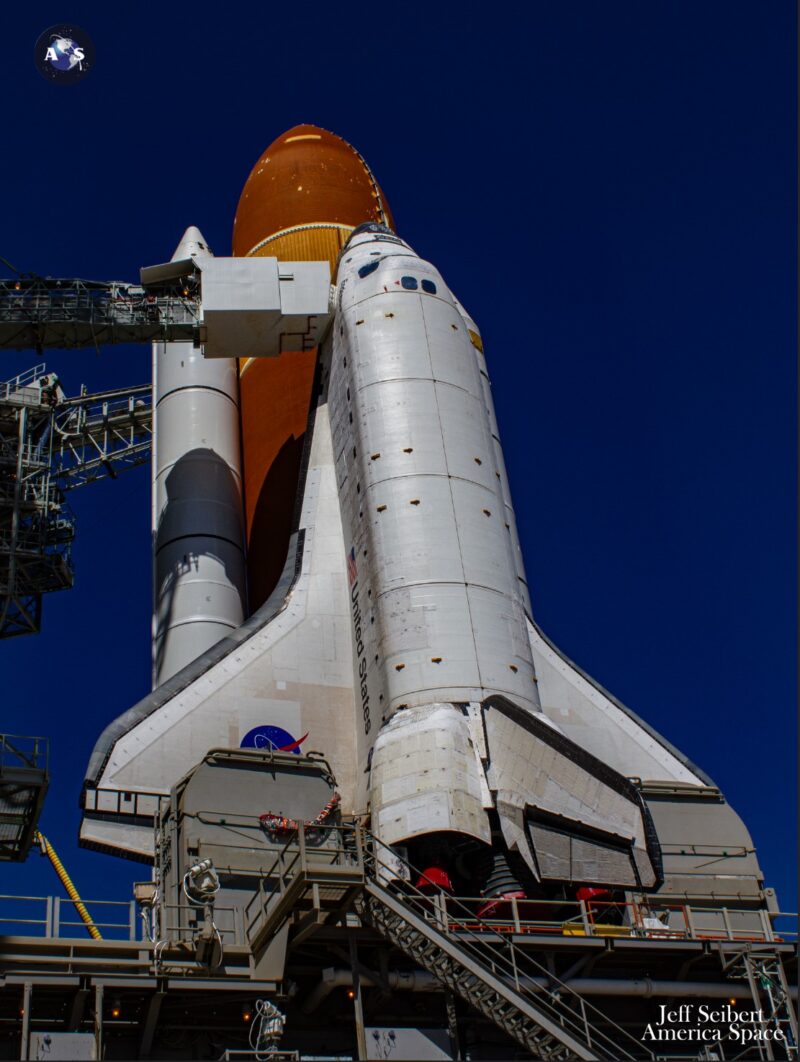
There was just one issue with the plan. An earthquake-resistant building large enough to house a 184-foot-tall Shuttle stack had a staggering cost estimate of $400 million. The California Science Center was unable to raise enough money to build the facility prior to Endeavour’s arrival. The museum still needed to protect the orbiter from the elements, so it built a metal hangar to temporarily house the spacecraft. The more aspirational exhibit would be conducted at a later date.
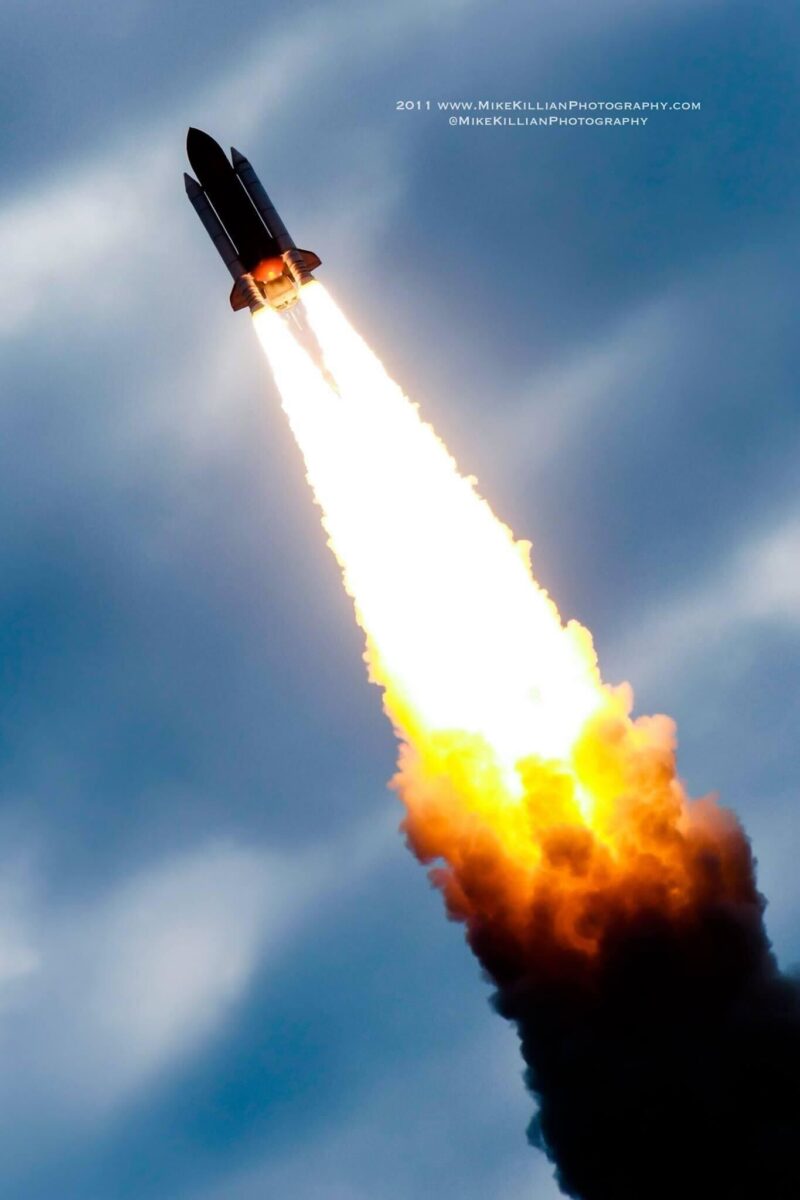
On September 21st, 2012, NASA delivered Endeavour to Los Angeles. Over the course of four days in October, the orbiter gradually crept her way through the city’s narrow streets. This alone was a monumental undertaking. To accommodate Endeavour’s 78-foot wingspan, the Science Center needed to cut down trees and remove street signs. The orbiter cleared other obstacles with inches to spare. After drawing the attention of throngs of admirers, Endeavour arrived at her temporary home, the Samuel Oschin Air and Space Pavilion.
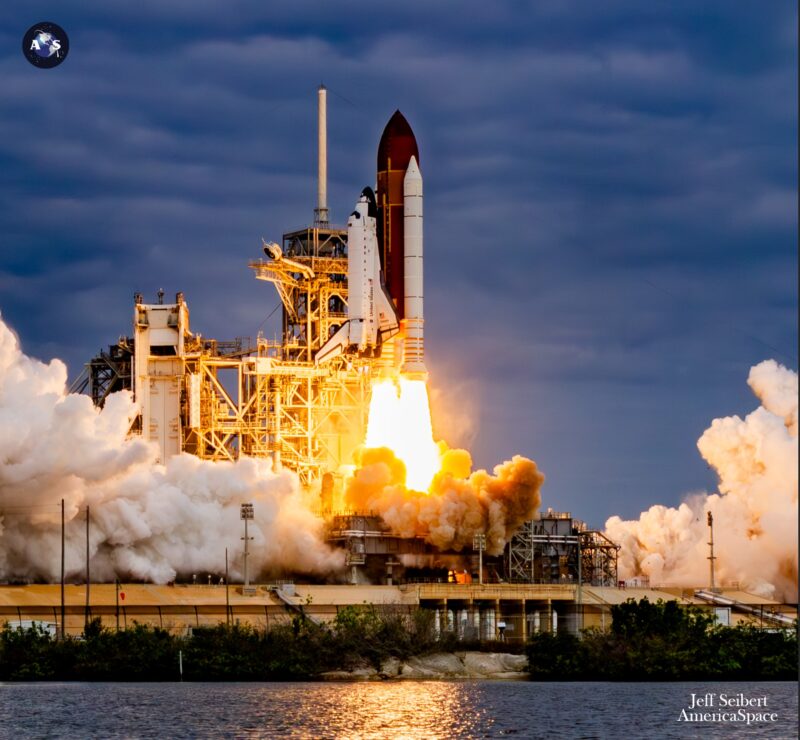
Endeavour instantly became the crown jewel of the California Science Center’s collection. She was commissioned to replace her lost sister ship Challenger, and she was largely built out of spare parts. A group of schoolchildren named Endeavour after British explorer James Cook’s first ship, as well as the Apollo 15 command module. Between 1995 and 2011, the orbiter completed 25 missions. Among other achievements, her crews remedied the Hubble Space Telescope’s blurry vision, connected the first two modules of the International Space Station, and created a topographic map of the Earth’s surface which is still in use today. Because of her impressive career, astronauts Doug Hurley and Bob Behnken passed on Endeavour’s name to the flagship of SpaceX’s Crew Dragon fleet.
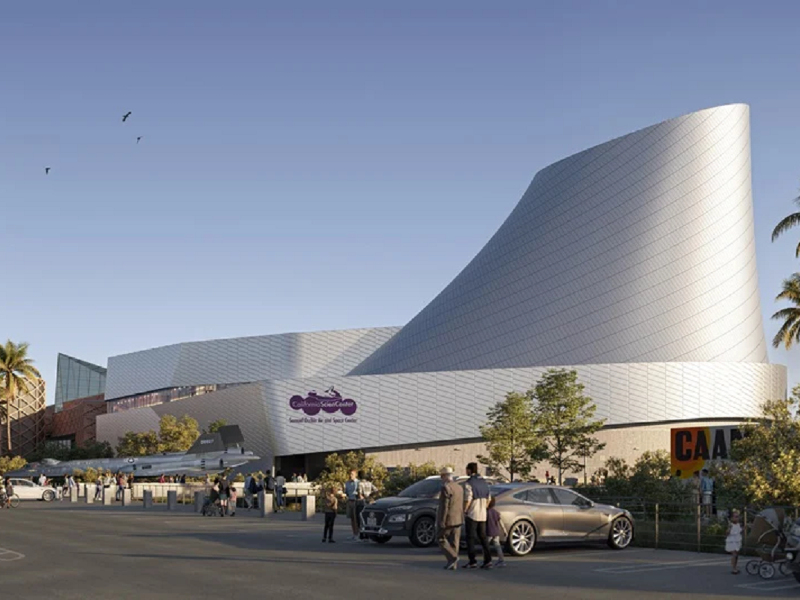
Throughout the following decade, the Science Center prepared for the larger exhibition. It acquired a flight-worthy ET and SRBs and placed them in storage outside. The required funding gradually arrived in the form of donations, large and small. The facility was christened the Samuel Oschin Air and Space Center in honor of a philanthropist who supported the museum.
By mid-2022, the Science Center’s leaders felt confident that they would obtain enough funding to complete the exhibit. The groundbreaking ceremony for the towering building took place on June 1st. Over a year later, the first SRB was lifted into place on November 7th of 2023. Like the orbiter herself, Endeavour’s SRBs are flight-proven. After splashing down in the Atlantic Ocean following a launch, every SRB was broken into four segments and cleaned thoroughly. Complete boosters were not reused; instead, various permutations and combinations of segments flew together on different flights.
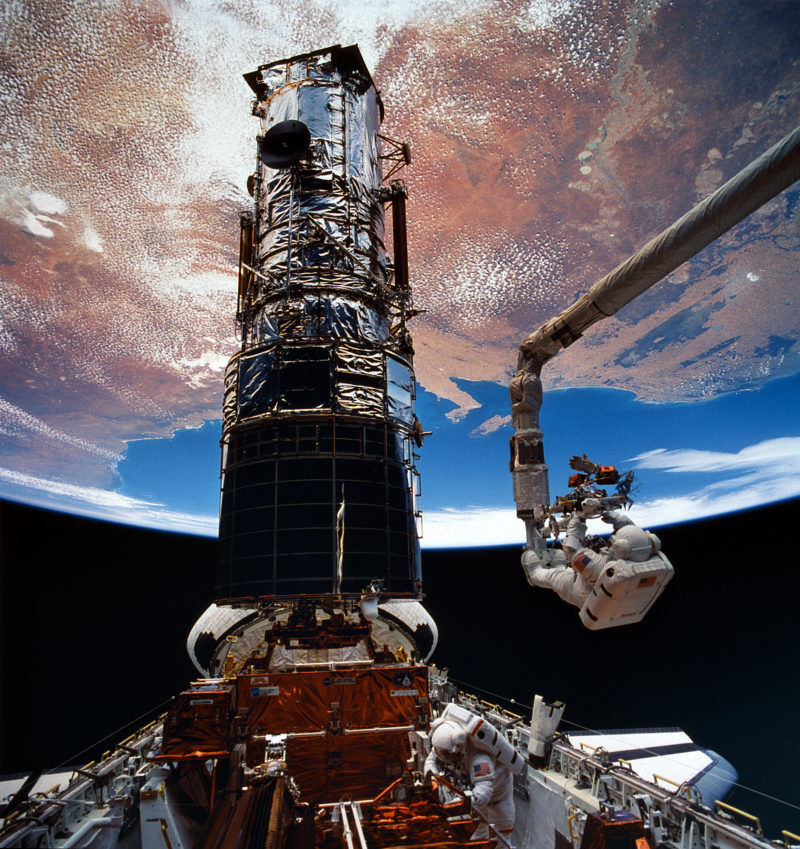
In total, the segments which comprise Endeavour’s boosters flew on 81 different flights. The earliest was STS-5, while the last was STS-123. Other noteworthy missions include STS-31, the flight which deployed Hubble, and STS-107, the tragic final voyage of Columbia. While flight-worthy SRBs can only remain stacked for 12 months, these boosters have been reinforced to support Endeavour for years to come. They are mounted on seismic isolators, which are intended to protect the Shuttle from California’s notorious earthquakes.
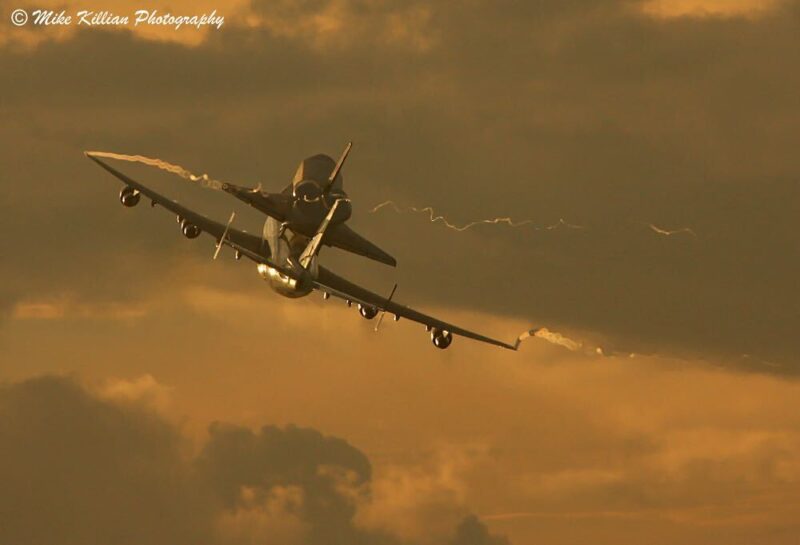
An authentic External Tank was perhaps the most difficult piece of hardware to obtain. Following a successful Shuttle launch, the ET would reenter the atmosphere and disintegrate over the Indian Ocean. However, NASA did have one spare tank in storage. ET-94 was slated for flight on a Spacelab or Spacehab microgravity science mission. These flights were removed from the manifest following the loss of Columbia in 2003. Since the tank was too heavy to support a mission to the ISS, it was instead used to test strategies for mitigating the loss of foam from ETs during ascent. After spending years in storage, it was donated to the California Science Center. Its spray-on foam insulation was refurbished for the exhibition.
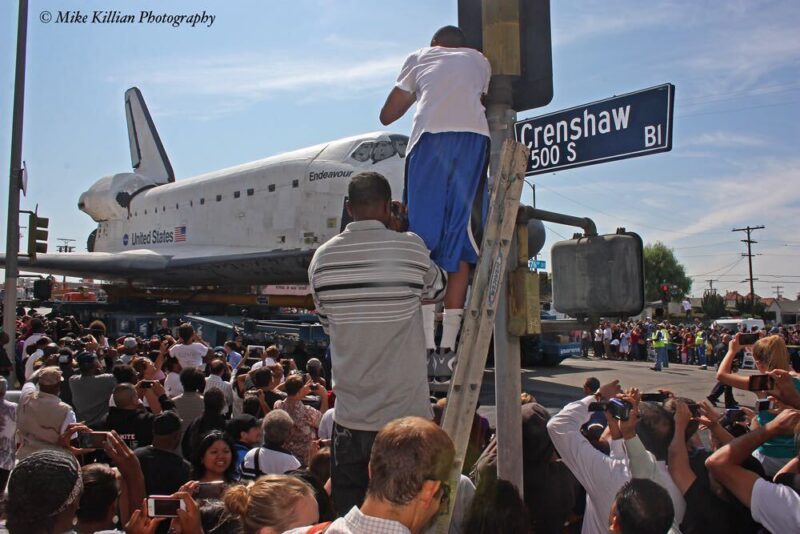
The installation of the ET set the stage for the pivotal installation of Endeavour. While the other elements of the stack certainly had value, the historic orbiter was irreplaceable. Endeavour was covered in a layer of shrink wrap to protect the 18,000 fragile tiles of her Thermal Protection System from rain and falling debris. She was then rolled out of her hangar and moved towards the stacked ET and SRBs.
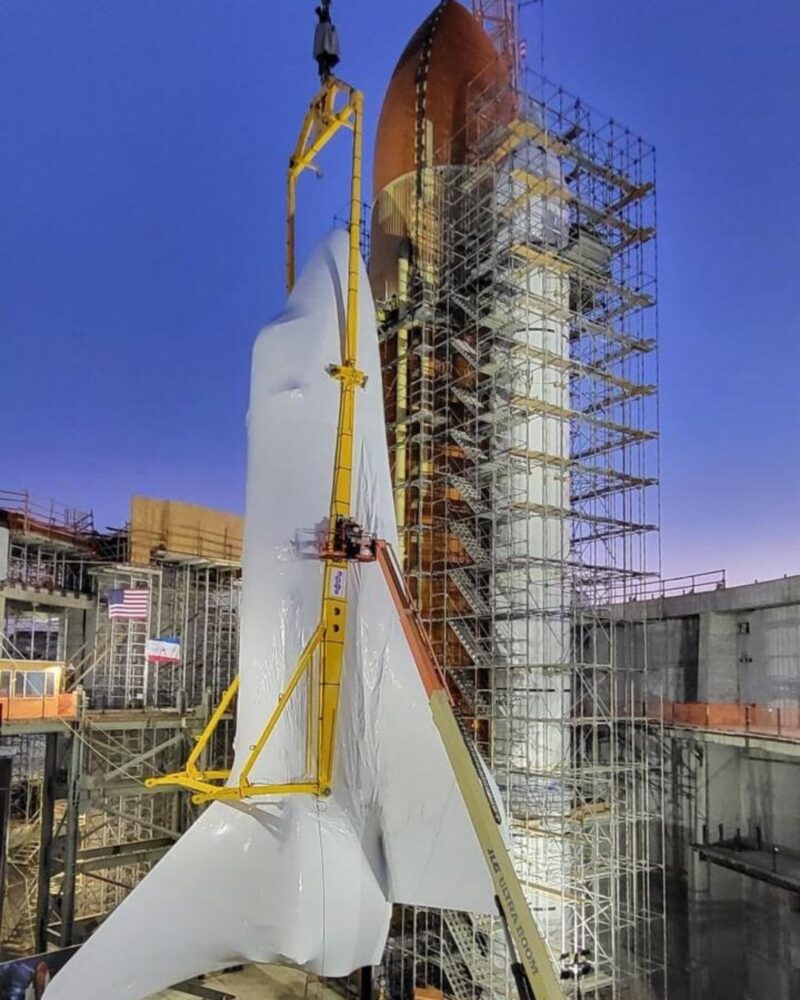
Half an hour past midnight, Endeavour was gently lifted off the ground by two cranes. The California Science Center team used a large sling taken from the Vehicle Assembly Building to rotate the orbiter to a vertical position. They then detached one of the cranes and moved Endeavour towards the other elements of the stack. A Shuttle orbiter is connected to its ET at three points. One strut connects to its nose, while the other two fit into ports between its wings. The aft struts proved to be problematic, and the team struggled to align them with the corresponding ports on Endeavour. This was, perhaps, to be expected, given the age of the hardware. Nine and a half hours after the beginning of the process, Endeavour was finally connected to ET-94. One day later, technicians finished tightening the bolts between the two vehicles, firmly securing them together.
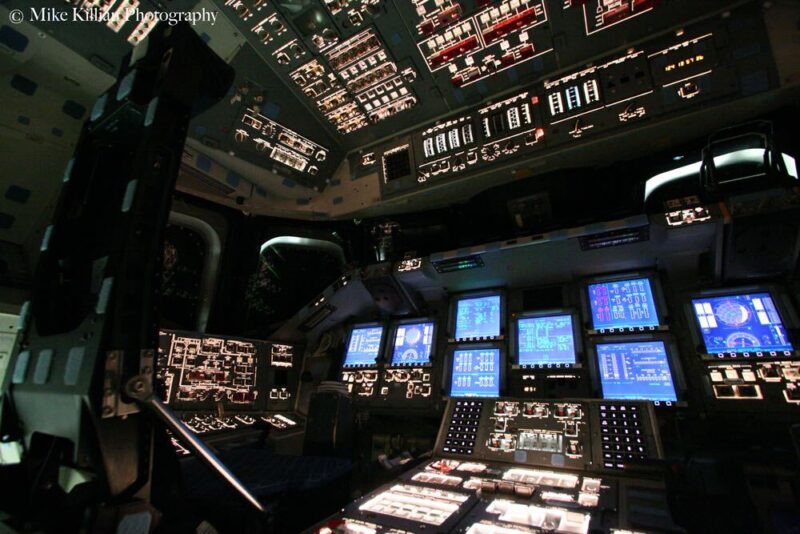
Several years will pass before the Air and Space Center is revealed to the public. The California Science Center has not announced an opening date for the facility. Endeavour, her ET, and her SRBs were all too large to fit through the doors of the completed building. Therefore, Endeavour was actually one of the first elements to be installed at the construction site. The bulk of the museum will need to be built around the Shuttle. Then, a group of supporting artifacts, including Ham the chimpanzee’s Mercury capsule, Pete Conrad and Dick Gordon’s Gemini 11 spacecraft, and the Apollo-Soyuz Test Project command module, will join Endeavour inside the facility.
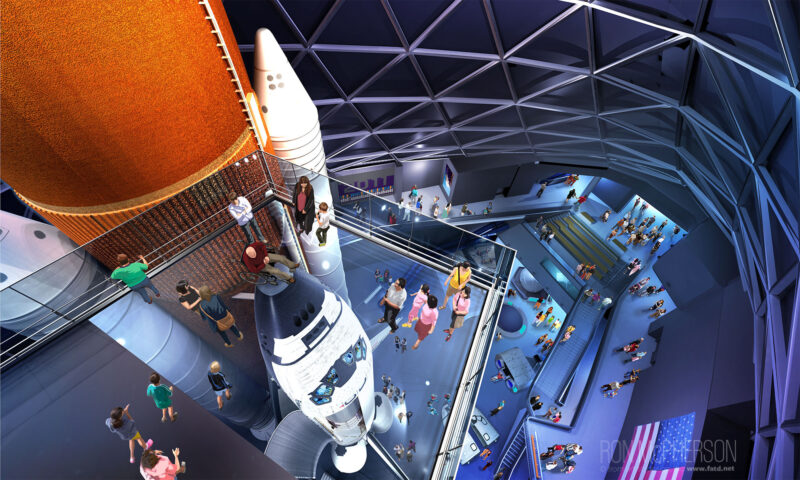
Fundraising will also continue to be a challenge. The California Science Center raised 360 million dollars prior to the installation of Endeavour [2]. To complete the Air and Space Center, the museum estimates that it will need to raise an additional 40 million dollars. It remains to be seen whether the highly visible Space Shuttle stack will help the Science Center reach its goal. In a few years, the California Science Center hopes that the fundraising and the construction of the building will be complete. At that point, Endeavour will be revealed in all her glory for visitors to admire for decades to come.




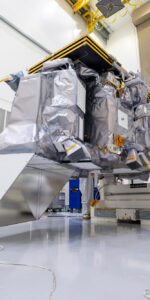
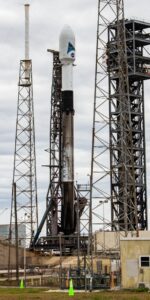
2 Comments
Leave a Reply2 Pings & Trackbacks
Pingback:Crew-8 Launch Realigns to Saturday, Six-Month Space Station Ahead - AmericaSpace
Pingback:Crew-8 Launch Realigns to Saturday, Six-Month Space Station Stay Ahead - SPACERFIT